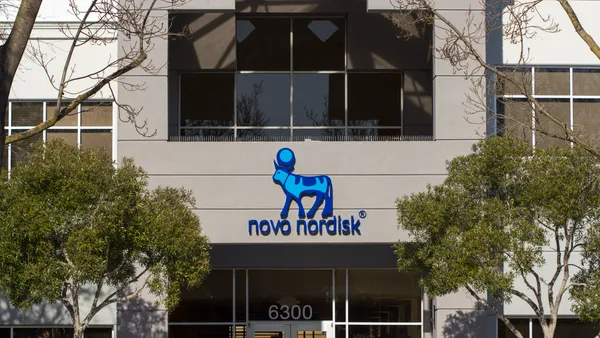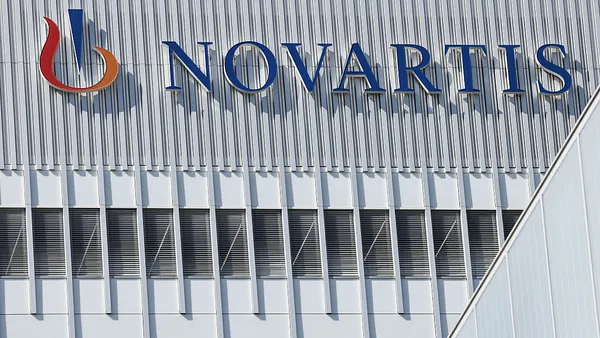PharmaTrax Worldwide Hormonal Contraceptive Market to Increase The world market for hormonal contraceptive products will surpass $6 billion in 2005, according to a new report from Kalorama Information. The report, Markets in Human Reproductive Medicine: Contraception and Infertility Management, concludes that oral and injectable products will continue to dominate the sector, while alternative delivery methods will battle for consumer and reimbursement acceptance. The report, which also examines the infertility management sector, analyzes usage worldwide, reviews the product pipeline, and provides key market data including size, growth, and competitive market share. The study forecasts steady growth in the hormonal contraceptive market. But price pressures and reimbursement issues have limited the penetration of newer methods of hormonal birth control, such as patches and implants. Insurers report that products such as the patch can cost them almost 10 times as much as traditional birth control pills. As a result, some health insurers actively steer women toward specific forms of contraceptives. Usage trends suggest that hormonal contraceptives, which now enjoy about a 15% market share worldwide, will continue to find more users in the coming years. In the United States, for example, more than 35% of women under age 30 use hormonal contraception as the method of choice, more than 50% more than condoms, the second most popular method. “Given the success of hormonal contraception, it makes sense that recent research has focused on hormonal methods, particularly on the development of new delivery systems and extended dosing to increase product differentiation and gain a competitive edge,” notes Steven Heffner, acquisitions editor at Kalorama Information. “But there are products on the horizon that may radically change the dynamic, products that can combine contraceptive and antimicrobial activity to combat disease transmission, including HIV.” Adoption of RFID Means Good News for IT Vendors This year will be key for radio frequency identification (RFID) solutions, according to a recent report from Datamonitor. The report, Global Manufacturing Outlook and IT Investment Insight — A Datamonitor Technology Decision-maker Panel Project, surveyed C-level executives, chief information officers, IT managers, and line-of-business (LOB) managers in 150 of the top 300 global manufacturers to investigate current issues and IT opportunities in the North American and European manufacturing sectors. The report reveals that 60% of manufacturers have a RFID project under way and suggests that the sector understands the technology’s key issues and intends to invest in RFID. The relative advancement of the manufacturing sector is illustrated by the types of RFID solutions currently in place. According to the survey, more than 68% of manufacturers are using RFID either in distribution or warehouse management, while only 56% have implemented a RFID solution to meet mandates by companies such as Wal-Mart or Metro. Furthermore, despite the fact that RFID technology is still immature and projects to date have tended to be pilots or limited implementations, manufacturers have already started to think ahead. According to the analysts, 78% of manufacturers surveyed say their next RFID project will involve process, data, and systems integration, where RFID technology promises to offer the greatest benefits. According to the analysts, these results indicate that manufacturers have moved beyond a “slap and ship” mentality and are looking to fully realize the benefits that RFID can offer. “This study demonstrates the willingness to take RFID a step further,” says Richard Clifford, a Datamonitor technology analyst and one of the authors of the study. “This year looks like it will be the year that we begin to see substantial RFID adoption for the first time.” Medicines in Development to Treat Cancer There are 399 medicines to treat cancer in development, according to the annual biopharmaceutical research survey by the Pharmaceutical Research and Manufacturers of America (PhRMA). PhRMA’s survey indicates that many of these medicines represent potential breakthrough cancer treatments, while others involve possible new uses for existing medicines. There are currently 178 biopharmaceutical companies, along with the National Cancer Institute, conducting research into possible cancer cures and treatments, according to the survey. The medicines in development are all either in clinical trials or under FDA review. These include: 62 treatments for lung cancer, the leading cause of cancer death in the United States; 49 for breast cancer, which is expected to strike more than 200,000 American women this year; 50 for prostate cancer, which is expected to kill more than 30,000 American men this year; and 35 for colorectal cancer, the third most common cancer in both men and women in the United States. Other medicines in development target kidney cancer, pancreatic cancer, brain cancer, skin cancer, ovarian cancer, and others. In addition, companies are working on medicines to improve the quality of life for people undergoing cancer treatment. “This commitment to research continues and accelerates the remarkable breakthroughs in the fight against cancer achieved in the past decade,” says Billy Tauzin, PhRMA president and CEO. Among the available breakthrough treatments are: • A metastatic colorectal cancer drug that prevents the formation of new blood vessels that provide tumors with oxygen and nutrients; • A medicine for nonsmall-cell lung cancer that inhibits the formation and growth of tumor cells; and • The first in a new class of drugs that prevent acute and delayed nausea and vomiting associated with chemotherapy. R&D Collaborative Opportunities Emerge in India A new report from Bridgehead International offers in-depth insight into the Indian pharmaceutical market, as well as the market’s opportunities for emerging research and development collaborations. The report, India: The Emerging R&D Collaborative Opportunity, characterizes India’s pharmaceutical industry as one of the world’s largest, ranking fourth in terms of volume and 13th in terms of value in the global pharmaceutical market. Pharmaceutical sales in India, which were $4.5 billion in 2002, have experienced growth of 8% to 9% per year. But that nation’s pharmaceutical market is tiny in comparison with its population; India’s per capita pharmaceutical expenditure was about $4.50 per person per year in 2002. Pharmaceutical consumption in India is skewed toward anti-infectives and vaccines, the report says. Additionally, medications for chronic diseases of lifestyle account for a smaller but fast-growing segment of the market. The Indian pharmaceutical market lacks comprehensive intellectual property regulation and, therefore, is not governed by product patents, according to the report. Since there are no incentives for innovation, Indian companies have focused their energies on process chemistry and manufacturing. As a result, the leading Indian pharmaceutical companies have become some of the most efficient manufacturing units in the world. According the report, more than 20,000 pharmaceutical manufacturers were registered in India as of 2003. These are mainly small manufacturers, focusing on either active pharmaceutical ingredients or formulations. Their expertise in process chemistry and manufacturing have allowed them to become the lowest cost providers of quality pharmaceuticals, and they have exploited this advantage to make forays into the global generic market. Poor revenue Growth Forecasts and low ‘freshness’ indices Predicted for Major Pharma Despite significant investment in research and development, many leading pharmaceutical companies will fail to develop and market products with significant levels of revenue contribution, according to a recent Wood Mackenzie report. The Corporate Franchise Analysis examines pharmaceutical company portfolios and provides competitive analysis from both a corporate and therapeutic perspective, with company activities analyzed in major and niche therapeutic areas. As part of its analysis, Wood Mackenzie has generated a Freshness Index for the top pharmaceutical companies in the world. By calculating the proportion of each company’s forecast sales in 2009 derived from products launched in the previous five years, the index measures the ability of a company’s pipeline to deliver novel products to market that will make a significant contribution to revenue. According to Wood Mackenzie, a low Freshness Index occurs when the company is either launching no new products or the revenue from new products is forecast to be low. (See chart on this page.) “The poor revenue growth forecasts and low Freshness Indices for pharmaceutical companies such as GlaxoSmithKline and Merck — which are focused on primary-care markets with large populations, such as depression, gastric ulceration, blood pressure, and high cholesterol — suggest that these markets are currently very well served with safe and effective medicines,” says Dr. Keith Redpath, head of life-sciences research at Wood Mackenzie. “It does appear from our analysis that the days of the blockbuster-driven pharmaceutical behemoth model are numbered,” adds Dr. James Featherstone, global head of pharmaceutical and biotechnology consulting. “Pfizer’s major cost-cutting initiatives and Novartis’ foray into generics are just the beginning of a significant restructuring of the pharmaceutical industry.” Costs for approved NMEs on the Decline Recent analysis from Parexel International indicates that the pharmaceutical industry spent about $1.25 billion for each new molecular entity (NME) approved by the FDA in 2004, making it the second consecutive year in which this figure declined from the high of $1.82 billion in 2002. The analysis is contained in Parexel’s recently released Pharmaceutical R&D Statistical Sourcebook 2005/2006, which is a compendium of research and development trends in the pharmaceutical and biotech sectors. Parexel’s analysis also illustrates that the pharmaceutical industry spent an estimated $1.25 billion for each NME submission (i.e., to the FDA), a metric that delves a bit deeper into the R&D pipeline. This measure has held firm for the last three years, remaining within a narrow range of $1.29 billion to $1.23 billion. Still, according to analysts, the 2004 R&D spending per NME submission was almost four times what it was in 1996, when it was $317 million per NME submission. Meanwhile, worldwide pharmaceutical R&D spending per global new active substance (NAS) launch spiked to a record $2.3 billion in 2004, representing a 43% increase compared with 2003. Marketers Losing Influence on Life-Sciences companies’ Bottom Lines Despite growing budgets and rising performance standards, marketing executives in life-sciences companies report that the influence their programs exert on bottom-line sales may be waning. This is the finding of a recent PARTNERS+simons survey. The report examined the spending tendencies and perceptions of senior-level marketers at leading life-sciences companies in the instrumentation, informatics, and pharmaceutical fields. “The life-sciences marketing function seems to be entirely disconnected from the sales capacity in most companies,” says Tom Simons, president of PARTNERS+simons. “Unless this statistic can be turned around, marketers will see their role diminished to the point of marginalization.” According to Mr. Simons, the disconnect between marketing and sales shows an opportunity for greater influence and a seat at the table for life-sciences marketers who can create processes within their companies that “shake hands” with sales, creating pipeline management strategies, and prioritized lead streams. Global Bioinformatics Market to Grow Over the past few years, the biological information sector has experienced explosive growth thanks to major advances in the field of molecular biology, as well as the availability of advanced equipment for rapid sequencing of large portions of genomes for several species. Currently, the global bioinformatics market is estimated at about $1.4 billion; it is expected to grow at an average annual growth rate (AAGR) of 15.8%, to reach nearly $3 billion by 2010. These are the findings of Business Communications Company Inc.’s (BCC) report: Bioinformatics Business: Technical Status and Market Prospects. Bioinformatics is a set of enabling technologies responsible for the annotation, storage, analysis, and searching/retrieval of nucleic acid sequence, protein sequence, and structural information. According to BCC, the industry can be broadly categorized into three product categories: content, analysis software and services, and IT infrastructure and other services. In the coming years, analysts anticipate the fastest growing market in the bioinformatics industry to be analysis software and services, primarily driven by the need for improved and sophisticated tools for analyzing and using biological data for developing therapeutic drugs. This segment is estimated to grow at an AAGR of 21.2%, from $444.7 million in 2005 to $1.16 billion in 2010. Growth in genomics-based content will be the key driver for the rise in genomics-based analysis software and services. The content market, which comprises generalized and specialized databases, will remain the largest segment through the forecast period. Currently, this market is about $717 million, and it is expected to be $1.4 billion by 2010. Specialized databases will constitute the major part of the bioinformatics content market since they provide data on microarrays, ESTs, SNPs, etc., which add value during drug discovery and development. As a result, the share of specialized databases in the total content market is expected to increase to more than 75% in 2010. Bioinformatics is expected to reduce the annual cost of developing a new drug by 33% and reduce drug discovery time by 30%. BCC estimates global drug discovery spending will increase to $25.1 billion in 2006, with a major portion of the spend going to bioinformatics. Steven Heffner There are products on the horizon that may radically change the birth control market, products that can combine contraceptive and antimicrobial activity to combat disease transmission, including HIV, says Steven Heffner, acquisitions editor at Kalorama Information. Billy Tauzin The hundreds of medicines now in development to fight cancer show the commitment of America’s biopharmaceutical companies to stemming cancer’s toll and helping patients win the war on cancer, says Billy Tauzin, President and CEO of PhRMA. July 2005 PharmaTrax Cancer Medicines in Development There are 399 cancer medications in clinical development. These include: Source: The Pharmaceutical Research and Manufacturers of America (PhRMA), Washington, D.C. For more information, visit phrma.org. 62 for lung cancer 50 for prostate cancer 49 for breast cancer 35 for colorectal cancer Sales Forecasts, Sales Growth, and Freshness Indices for the Top 10 Pharmaceutical Companies Sales Growth 2009 5-year Freshness Rank Company 2009 Sales CAGR 2004-2007 Index 2004 $ (m) (%) (%) 1 Pfizer 41,950 (1.9%) 10.1% 2 sanofi-aventis 37,075 2.8% 10.2% 3 GlaxoSmithKline 32,914 0.9% 6.5% 4 Roche 29,705 11.2% 9.8% 5 Novartis 28,486 6.0% 5.3% 6 AstraZeneca 24,668 3.4% 0.6% 7 Johnson & Johnson 23,914 1.6% 3.4% 8 Bristol-Myers Squibb 21,974 7.3% 11.3% 9 Amgen 21,857 17.0% 5.0% 10 Merck & Co. 20,644 (2.1%) 7.1% Total 669,945 Source: Wood Mackenzie, Boston. For more information, visit woodmackenzie.com. Industry R&D Spending per NME Approved in the U.S., 1995-2004 Year $ Spent 1995 1996 1997 1998 1999 2000 2001 2002 2003 2004 $543 million $319 million $487 million $703 million $649 million $963 million $1.24 billion $1.82 billion $1.62 billion $1.25 billion * Note: Not all industry R&D spending is on NMEs or for human drugs Total PhRMA member R&D spending/NMEs approved by FDA. Source: Parexel’s Pharmaceutical R&D Statistical Sourcebook 2005/2006. For more information, visit parexel.com. Tom Simmons This survey shows an opportunity for greater influence and a seat at the table for life-sciences marketers who can create processes that “shake hands” with sales, says Tom Simons, President, PARTNERS+simons. Promotional Budget Trends 77% of respondents say their budgets have increased over the past three years. 64% say the percentage of sales revenue their companies spend on marketing has increased. Traditional brand-building activities are receiving less attention and funding, while the majority of spending is focused on lead-generation tactics, including sales promotion/brochures (77%), interactive marketing (54%), print direct marketing (45%), and trade shows (45%). 91% of marketers surveyed indicated their group’s role had grown less important in delivering bottom-line sales results. 82% of the study’s participants say management is requiring greater accountability in the marketing budget spend; but three of five report having no strategic planning resources for assistance with allocating the marketing budget. 59% of respondents claim their marketing functions have an established process for tracking and developing sales leads; only 27% rate those processes good; an even greater share of respondents (28%) say these processes are poor or dismal. Fewer than one in five marketers rate their ability to track the success of their own communication programs as good; the balance rate their ability as fair (50%), poor (18%), or dismal (14%). PARTNERS+simons, Boston. For more information, visit partnersandsimons.com. Worldwide Value of Bioinformatics Market Through 2010 AAGR% 2002 2003 2004 2005E 2010E 2005-2010 Revenue $824.0 $1,021.6 $1,226.0 $1,434.6 $2,986.6 15.8% Note: $ are in millions Source: BCC Inc., Norwalk, Conn. For more information, visit bccresearch.com. Follow up Bridgehead International, Leicestershire, England, is a leading biopharmaceutical consultancy group, offering a range of services designed to assist clients in achieving extraordinary growth across the product and technology value chain. For more information, visit bridgehead.com. Business Communications Company Inc. (BCC), Norwalk, Conn., studies major market, economic, and technological developments to produce industry reports, newsletters, and conferences. For more information, visit bccresearch.com. Datamonitor, New York, is a business information company specializing in industry analysis. For more information, visit datamonitor.com. Kalorama Information, New York, supplies independent market research for the life-sciences industry. For more information, visit kaloramainformation.com. Parexel International, Waltham, Mass., delivers a full range of services and solutions to the pharmaceutical, biotechnology, and medical-device industries. For more information, visit parexel.com. PARTNERS+simons, Boston, is a full-service marketing and communications agency. For more information, visit partnersandsimons.com. The Pharmaceutical Research and Manufacturers of America (PhRMA), Washington, D.C., represents the country’s leading pharmaceutical research and biotechnology companies. For more information, visit phrma.org. Wood Mackenzie, Boston, provides a range of consulting services and research products to the life-sciences and energy industries. For more information, visit woodmac.com.
An article from











